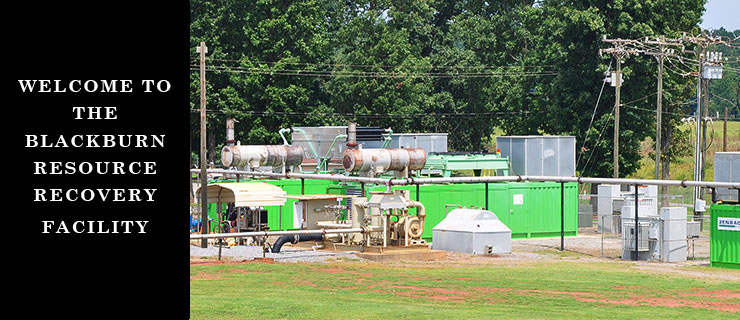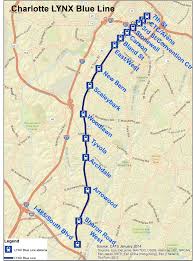In the present day, Charlotte is often divided into two identities. One is an upscale metropolis infused with modern technology and elaborate public service projects. The other is a dilapidated, poverty-stricken urban space that is often overlooked in the city’s budget and planning. Our vision is to unite these two identities into one ideal urban center that provides equitable services to its citizens regardless of where they live and maintains a focus on minimizing its environmental impact.
Renewable Energy
Charlotte is home to a number of renewable energy industries including Duke Energy, whose Renewable Energy Program suggests expansion of sustainable energy investment, as well as the Catawba County Regional EcoComplex and Resource Recovery Facility, which converts Charlotte’s waste into reusable bi-products.

Currently, Duke Energy provides electricity to most, if not all, of Charlotte’s residents, and the company is currently undertaking projects to continue providing this much-needed service in a responsible and sustainable manner. It is part of our vision for Charlotte that everyone living in the metropolitan area will have access to cheap, efficient electricity through Duke’s Renewable Energy Program among other energy opportunities. The objective of the program is to shift reliance away from fossil fuels and instead invest in wind, solar, and hydroelectric power projects as viable sources of energy.
North Carolina is the second greatest supplier of solar-powered energy, and has the potential to join the leading ranks of supplying wind-powered energy. When we propose economic and infrastructural expansion in Charlotte, it is important that these also consider green building practices that encourage both growth of the job market, but also ecological integrity. The U.S. Green Building Council has a Charlotte subchapter, which works with local and national industries to encourage sustainable urban development in Charlotte as the city continues to grow. By building in the sustainable, or green, mindset, we can deflect retrofitting costs, and can encourage the development of urban centers while also inhibiting further climate damage. Cities that emulate this sustainable mindset include Chicago, Illinois and Vancouver, British Columbia, Canada.
Expansion of Healthcare Centers into Low-Income Neighborhoods
Despite Charlotte’s vast healthcare industry, there are many neighborhoods that lack quality medical treatment centers. To solve this problem, we propose the building of additional medical clinics and healthcare centers in the low-income, underserved neighborhoods of Northwest Charlotte, NoDa, Eastway, and Mint Hill. These centers will allow low-income people with severe injuries and debilitating sicknesses quick access to quality treatment.
There are two major contributors in to health care in the Charlotte area, Novant Health and Carolina HealthCare Systems. These two systems are extensive and are constantly expanding, creating jobs and greater competition within the area. Unfortunately, the distribution of resources provided by these contributors, as well as their prices, create a divide between the populations of Charlotte that can afford this patient care and the other populations in Charlotte that make use of the scattered free health clinics. The issues surrounding accessibility and quality insurance of health care practice is a widely discussed topic in federal, state, and township laws, and our while our solution is no where near comprehensive, our proposed start is to provide equal treatment across socio-economic borders through access to preventative treatment and diagnostic centers.
Public Transit: Expansion of the LYNX Light Rail System, CATS Busing System, and Trolley Lines
In order to serve a greater segment of the population, especially those without personal transportation, we are proposing to expand the LYNX light rail system throughout all of Charlotte in general and into the lower-income neighborhoods specifically. Currently, the light rail op erates at 15 stops, with only four of those stops capitalizing on the presence of the light rail by surrounding the stop with various coffee shops, eateries and stores. With the small number of stops, most located on a straight path from South Boulevard into Charlotte, many riders of the LYNX light rail system currently live in these neighborhoods or participate in Park-and-Ride programs. Our vision is that any citizen living within the city limits of Charlotte will never more than a twenty minute pedestrian commute away from the nearest rail station and that these stations will be located in parts of the community that allow the community to grow their business sector as well as housing market values.
erates at 15 stops, with only four of those stops capitalizing on the presence of the light rail by surrounding the stop with various coffee shops, eateries and stores. With the small number of stops, most located on a straight path from South Boulevard into Charlotte, many riders of the LYNX light rail system currently live in these neighborhoods or participate in Park-and-Ride programs. Our vision is that any citizen living within the city limits of Charlotte will never more than a twenty minute pedestrian commute away from the nearest rail station and that these stations will be located in parts of the community that allow the community to grow their business sector as well as housing market values.
As Charlotte is home to many districts and neighborhoods, we hope to expand the LYNX light rail system in these neighborhoods while also allowing the neighborhoods to capitalize on the presence of the inexpensive, public transportation. By placing parking locations for the light rail and light rail stops in the business sectors of these neighborhoods, we hope to encourage the growth of small businesses within more isolated communities. The maintenance and construction of the expanded light rail system will create job growth in these communities, while those that live in the communities have access to sustainable transportation.
In addition to the expansion of the LYNX light rail system, an additional increase in the busing network CATS would allow for greater interregional accessibility in the Greater Charlotte area. Theoretically, where LYNX light rail stops are located, there should be a network of CATS buses ferrying members of the community and commuters to all corners of the region. There would be stops at the LYNX stations and stops in the housing, education, and business districts of the center so that people may access the area without private transportation. The Trolley Line, or LYNX Gold Line, also connects people within the Uptown area of Charlotte.







